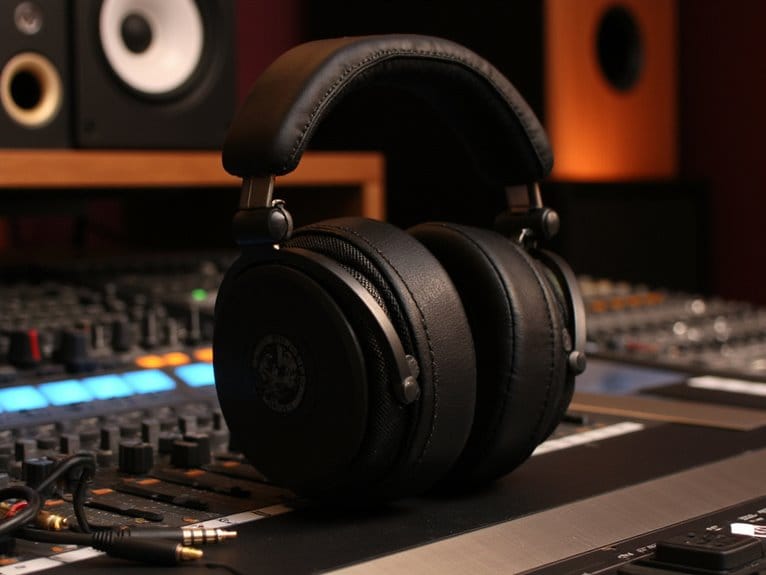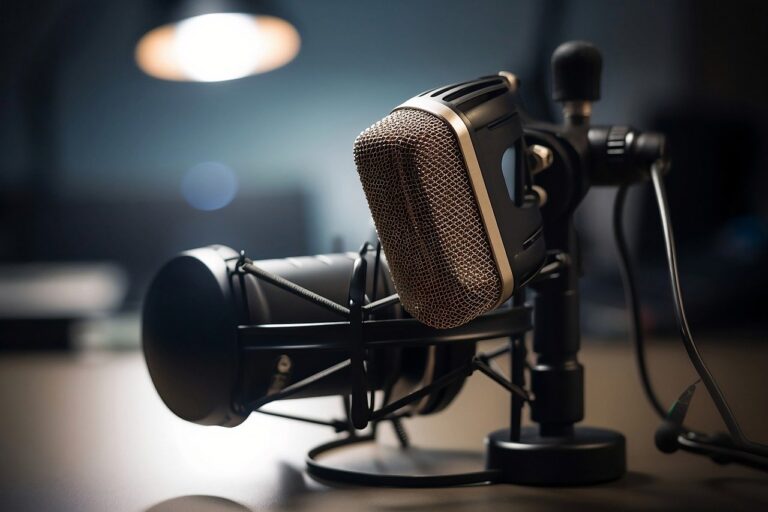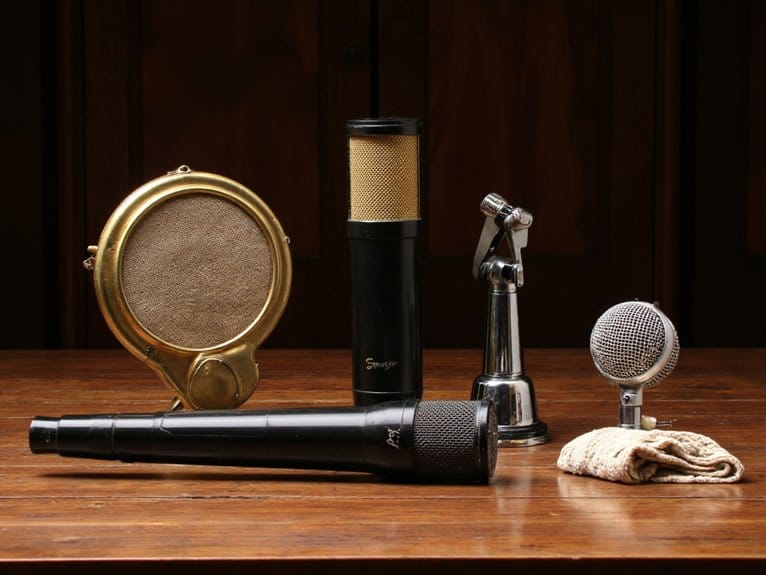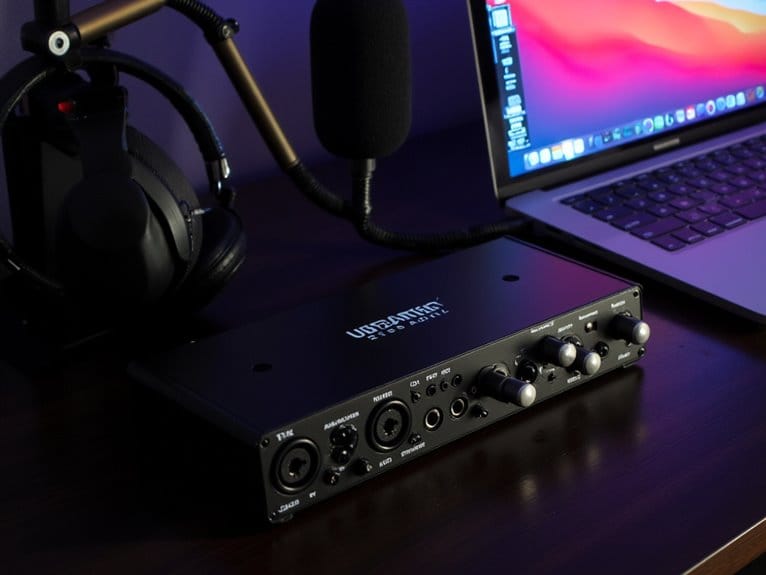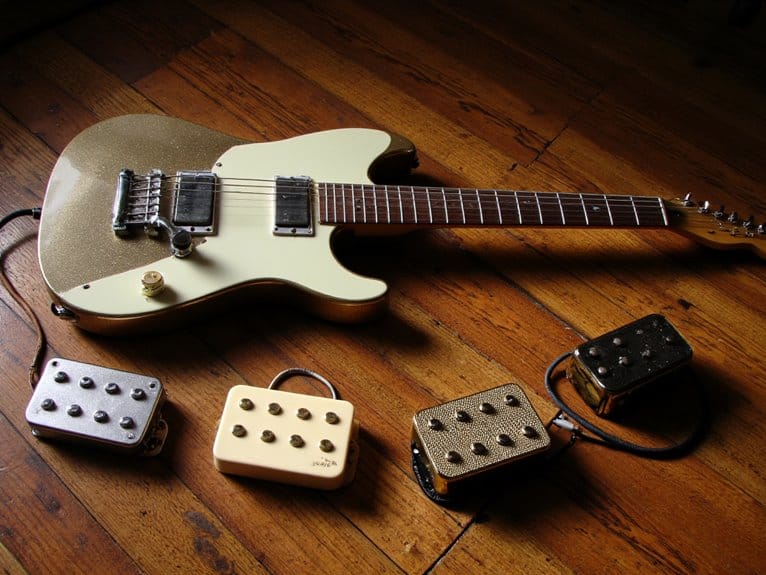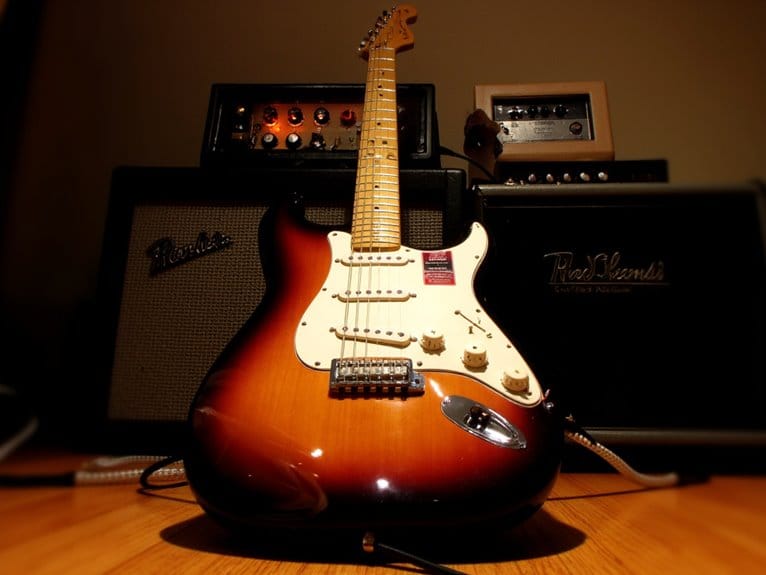What Makes Good Mixing Headphones: Key Features Explained
Good mixing headphones require neutral frequency response across 20 Hz to 20 kHz without coloration, ensuring your mixes translate accurately to other systems. You’ll want dynamic drivers between 40-50mm for balanced reproduction, high impedance around 250 ohms for reduced distortion, and open-back designs for natural soundstage. Comfort features like memory foam padding and lightweight construction prevent fatigue during long sessions, while wired connectivity eliminates latency issues that could compromise your workflow and decision-making process.
We are supported by our audience. When you purchase through links on our site, we may earn an affiliate commission, at no extra cost for you. Learn more.
Notable Insights
- Neutral frequency response from 20 Hz to 20 kHz ensures accurate sound reproduction without coloration for reliable mix translation.
- Open-back designs provide natural, speaker-like sound with reduced resonance, while closed-back models offer superior noise isolation.
- Large dynamic drivers (40-50mm) deliver balanced sound reproduction with accurate low-frequency extension and detailed high frequencies.
- Comfortable, lightweight construction with well-padded earcups and replaceable components prevents fatigue during extended mixing sessions.
- Wired connectivity with higher impedance (250+ ohms) provides zero latency and superior audio quality with reduced distortion.
Frequency Response and Sound Accuracy Requirements
When I first started mixing music professionally, I made the classic mistake of trusting headphones that flattered my tracks with boosted bass and sparkling highs, only to discover my mixes sounded terrible on every other playback system.
You need headphones with neutral frequency response covering the complete 20 Hz to 20 kHz range, matching human hearing capabilities without missing vital audio content. Sound accuracy means faithful reproduction without coloring, boosting, or altering frequencies, which enables objective EQ decisions during your mixing process.
Professional open-back designs typically offer more natural, speaker-like sound with less resonance buildup, while consistent response across the spectrum prevents masking certain frequencies, ensuring your mixes translate well from car speakers to earbuds. Poor headphone quality often results in mix translation issues where your final audio doesn’t perform well across different playback systems. The proximity to ears in headphones allows for exceptional detail retrieval that can reveal subtle nuances often missed in typical speaker setups. Higher impedance headphones around 250 ohms deliver superior audio quality with reduced distortion compared to consumer-grade alternatives. High sensitivity ratings around 110 dB are crucial for detecting quiet elements in beats that might otherwise go unnoticed during the mixing process.
Driver Technology and Design Considerations
When you’re choosing mixing headphones, you’ll encounter different driver technologies that fundamentally shape how your music translates, with dynamic drivers dominating the market due to their reliable electromagnetic design, robust bass response, and proven track record in professional studios.
The size of these drivers matters more than you might expect, as larger diameters typically deliver better low-frequency extension and overall volume capabilities.
Though I’ve learned that exceptional membrane materials like liquid-crystal polymers can make smaller drivers punch well above their weight class.
Understanding how driver construction affects your mixing decisions becomes essential when you’re spending hours analyzing transient response, frequency accuracy, and the subtle harmonic details that separate amateur recordings from polished, professional productions.
For optimal performance, look for headphones with large dynamic drivers of 40mm or 50mm that provide the balanced sound reproduction crucial for accurate mixing work.
Professional models like the Sony MDR7506 demonstrate how 40mm neodymium drivers can deliver the flat frequency response and accurate sound reproduction that audio engineers rely on for critical mixing decisions.
Driver Types Compared
One thing I’ve learned from years of testing mixing headphones is that the driver technology inside your cans makes a bigger difference than most people realize, and each type brings its own strengths and quirks to the table.
When examining dynamic vs planar magnetic drivers, you’ll find dynamics excel at punchy bass response and cost-effectiveness, while planars deliver superior detail and low distortion for critical listening.
Balanced armature drivers offer clear armature advantages in efficiency and precision, though they typically need multiple units for full-range coverage.
Electrostatic drivers provide exceptional clarity but require specialized amplification, making them expensive.
Hybrid designs cleverly combine driver types, pairing dynamic woofers with balanced armatures to achieve both powerful bass and detailed highs in one package.
Size and Performance
Beyond the driver technology itself, I’ve discovered that the physical dimensions and engineering choices behind your mixing headphones can make or break your ability to hear what’s really happening in your mix.
Driver size directly impacts your headphones’ ability to reproduce low frequencies accurately, with larger 40-50mm drivers moving more air for better bass response compared to smaller alternatives. However, I’ve learned that bigger isn’t always better for sound fidelity—poorly engineered large drivers can actually muddy high-frequency detail.
The physical design matters just as much, where circumaural over-ear configurations provide superior soundstage and natural bass extension, while the driver angling and baffle construction affect spatial perception, helping you create mixes that translate properly across different playback systems.
Comfort and Ergonomic Features for Extended Sessions
When you’re spending hours perfecting a mix, I’ve learned that comfort features can make the difference between productive sessions and painful ones that force you to take frequent breaks.
You’ll want to prioritize headphones with well-padded earcups using memory foam or thick leatherette materials, along with cushioned headbands that distribute weight evenly across your skull without creating pressure points.
Lightweight construction becomes absolutely critical during those marathon mixing sessions, since even an extra ounce or two can translate into neck strain and fatigue that’ll have you reaching for the aspirin bottle.
Look for headphones with ergonomic wrap-around designs that prevent slippage during extended use, as proper weight distribution helps reduce stress on both your head and the headphone components themselves.
Padded Earcups and Headbands
Since you’ll likely spend hours fine-tuning mixes, the padding on your headphones’ earcups and headband becomes absolutely critical for maintaining both comfort and audio accuracy throughout extended sessions.
Memory foam stands out among padded earcup materials because it conforms to your ear shape, eliminating pressure points that cause fatigue. Velour-covered padding offers excellent breathability, while leather provides superior noise isolation at the cost of heat buildup.
Your headband adjustability matters just as much—thick padding distributes weight evenly across your scalp, preventing those annoying pressure headaches that derail creative flow. Look for replaceable pads since they’ll inevitably wear down, and proper clamping force guarantees your headphones stay secure without becoming a torture device during marathon mixing sessions.
Lightweight Construction Benefits
Comfortable padding sets the foundation, but the overall weight of your headphones determines whether you’ll actually want to keep them on your head for those inevitable eight-hour mixing marathons.
When you’re chasing perfect sound quality, the last thing you need is neck strain pulling your attention away from critical EQ decisions.
Lightweight construction delivers measurable benefits that directly impact your user experience:
- Reduced muscle fatigue – lighter designs prevent tension headaches and shoulder strain during extended sessions
- Enhanced focus retention – physical comfort keeps your attention on the mix rather than discomfort distractions
- Improved portability – easier transport between studios without adding bulk to your gear bag
- Better ergonomic integration – allows manufacturers to incorporate advanced comfort features without excessive weight penalties
Smart engineers understand that removing unnecessary mass improves both comfort and professional endurance.
Build Quality and Durability Standards
Most mixing headphones I’ve tested over the years fall apart faster than you’d expect, which is why I can’t stress enough how essential build quality becomes when you’re investing in professional audio gear.
Material resilience starts with high-grade plastics like ABS or polycarbonate for frames, combined with metal reinforcements in stress points.
Premium headphones demand robust ABS or polycarbonate frames with strategic metal reinforcements at critical stress points for professional durability.
Assembly precision shows in details like reinforced cables with Kevlar sheaths, gold-plated connectors that resist corrosion, and solid hinge mechanisms that won’t loosen after months of studio use.
You’ll want modular components—replaceable ear pads, detachable cables, screw-based assembly rather than glued joints.
These features extend lifespan considerably, making your investment worthwhile when you’re spending long hours mixing.
Noise Isolation and Sound Control Capabilities
When you’re sitting in a noisy coffee shop trying to catch subtle reverb tails or detect phase issues in your mix, you’ll quickly realize that proper noise isolation isn’t just a luxury—it’s absolutely vital for making accurate mixing decisions.
The noise isolation benefits of quality closed-back headphones like the Sennheiser HD280 Pro extend far beyond blocking distractions.
Here’s how effective isolation enhances your mixing workflow:
- External distraction reduction prevents environmental noise from masking essential mix details.
- Volume management allows lower listening levels, reducing ear fatigue during long sessions.
- Improved low-end clarity reveals bass frequencies that outside noise typically masks.
- Enhanced stereo imaging helps you focus on spatial details without interference.
Understanding sound control importance means recognizing that flat frequency response paired with excellent isolation creates the foundation for professional mixing accuracy.
Professional Features and Connectivity Options
Although you might assume all professional headphones share the same basic capabilities, the reality is that specific technical features and connectivity options separate true mixing workhorses from consumer-grade alternatives that’ll leave you second-guessing every EQ decision.
| Feature | Professional Standard | Impact on Mixing |
|---|---|---|
| Driver Size | 40mm to 90mm | Enhanced clarity and detail |
| Impedance Ratings | 38 to 600 ohms | Better signal handling accuracy |
| Frequency Response | 5Hz to 50kHz | Complete sonic spectrum coverage |
| Sensitivity | 96-106 dB/mW | Ideal dynamic range control |
| Cable Types | Detachable/balanced options | Reduced interference, easy replacement |
Professional mixing demands wired connectivity for zero latency, while higher impedance models require dedicated amplifiers but deliver superior transient response and reduced distortion that’s vital for accurate mix translations.
Frequently Asked Questions
How Much Should I Budget for Professional-Quality Mixing Headphones?
When budgeting for professional mixing headphones, you’ll want $150-$400 for reliable mid-range options. These budgeting tips help: research headphone brands like Audio-Technica or Sony, prioritize neutral sound over features, and consider your studio’s long-term needs.
On a final note
You’ll find that choosing the right mixing headphones isn’t just about brand names or flashy marketing, though I’ll admit those shiny designs can be tempting. Focus on flat frequency response, comfortable padding for those inevitable late-night sessions, and solid build quality that won’t leave you scrambling for replacements. Remember, your ears are your most valuable tools, so invest in headphones that’ll serve them well.

